Exhibition dates: 9th October 2022 – 16th January 2023
Curators: Kristen Gresh, Estrellita and Yousuf Karsh Senior Curator of Photographs at the MFA; Katherine A. Bussard, Peter C. Bunnell Curator of Photography at Princeton University Art Museum; and Alissa Schapiro, an independent curator and doctoral candidate in art history at Northwestern University
Margaret Bourke‑White (American, 1904-1971)
Flame Burner Ann Zarik
1943, printed about 2000
Gelatin silver print
Princeton University Art Museum
© LIFE Picture Collection.
Courtesy Museum of Fine Arts, Boston
Continuing the illustrated magazine theme from the last Bill Brandt post, here presented are images, cover and photo essay by major photographers such as Robert Capa, Alfred Eisenstaedt, Margaret Bourke‑White, Henri Cartier‑Bresson and Gordon Parks which appeared in the influential American magazine Life (1926-1972).
“This exhibition takes a closer look at the creation and impact of the carefully selected images found in the pages of Life – and the precisely crafted narratives told through these pictures – in order to reveal how the magazine shaped conversations about war, race, technology, national identity, and more in the 20th-century United States. The photographs on view capture some of the defining moments – celebratory and traumatic alike – of the last century, from the Birmingham civil rights demonstrations to the historic Apollo 11 moon landing. Far from simply nostalgic and laudatory, the exhibition critically reconsiders Life‘s complex, and sometimes contradictory, approach to such stories through works by photographers from different backgrounds and perspectives who captured difficult images of ethnic discrimination and racialised violence, from the Holocaust to white supremacist terror of the 1960s.” (Exhibition text)
Of particular interest in the posting is the contact sheet to Eisenstaedt’s famed set of the sailor kissing the nurse and other images of the Times Square VJ‑Day celebrations (1945, below) … in order to note how the artist chose that particular negative out of the four (good exposure, less confusing background to the central characters); how he marked the contact sheet with the usual red pencil that black and white photographers use to indicate his negative preference and the cropping of the image that was required (notice the arrow at bottom left, a crop which was not heeded in the final print); and how the final print is much darker than the contact sheet (notice the dark pavement and lack of detail in the sailors outfits).
In the final print the negative has been cropped up from the bottom to tension the lifting of the nurse’s raised leg as it floats above the ground (here, the distance from the bottom of the shoe to the bottom of the image is critical in order to make the shoe “float”), the man at right now makes half an appearance, and the man at far left has been included and “burnt in” under the enlarger so that he recedes from and does not detract from the importance of the figures in the foreground. The background figures form a triangle behind the sailor and the nurse, forming a stage for them, and a supporting and encircling cast of characters. The vanishing point of the image and the buildings does the rest.
Dr Marcus Bunyan
Many thankx to the Museum of Fine Arts Boston for allowing me to publish the photographs in the posting. Please click on the photographs for a larger version of the image.
Margaret Bourke‑White (American, 1904-1971)
Mrs. Nelson and her two children outside her laundry which she operates without running water
1936
Gelatin silver print
The Howard Greenberg Collection – Museum purchase with funds donated by the Phillip Leonian and Edith Rosenbaum Leonian Charitable Trust
© LIFE Picture Collection
Courtesy Museum of Fine Arts, Boston
Margaret Bourke‑White (American, 1904-1971)
At the Time of the Louisville Flood
1937
Gelatin silver print
The Howard Greenberg Collection – Museum purchase with funds donated by the Phillip Leonian and Edith Rosenbaum Leonian Charitable Trust
© LIFE Picture Collection
Courtesy Museum of Fine Arts, Boston
Margaret Bourke‑White (American, 1904-1971)
Fort Peck Dam, Montana
1936
Gelatin silver print
Life Picture Collection
© LIFE Picture Collection.
Courtesy Museum of Fine Arts, Boston
Life Magazine (1883-1972)
Life, November 23, 1936 (Cover photograph by Margaret Bourke-White)
1936
Illustrated periodical
Life Picture Collection
Photo by Life Magazine
© LIFE Picture Collection.
Courtesy Museum of Fine Arts, Boston
In the period from the Great Depression to the Vietnam War, the majority of photographs printed and consumed in the U.S. appeared on the pages of illustrated magazines. Among them, Life – published weekly from 1936 to 1972 – was both extraordinarily popular and visually revolutionary. Estimates for pass-along readership – the number of people who shared each copy of Life in spaces like waiting rooms and offices – suggest that the magazine may have regularly reached about one in four people in the country. The photographers who worked for Life bore witness to some of the most defining moments of the 20th century – and the magazine’s use of photography shaped the way many Americans experienced, perceived and remembered these events. Co-organised by the Museum of Fine Arts, Boston (MFA), and the Princeton University Art Museum, Life Magazine and the Power of Photography offers a revealing look at the collaborative processes behind many of the publication’s most recognisable, beloved and controversial images and photo essays. The exhibition brings together more than 180 objects, including original press prints, contact sheets, shooting scripts, internal memos and layout experiments – drawing on unprecedented access to Life‘s picture and paper archives. Added to the exhibition for its presentation at the MFA, Life Magazine and the Power of Photography also incorporates works by contemporary artists Alexandra Bell, Alfredo Jaar and Julia Wachtel, whose critical reflections on photojournalism and the politics of images frame urgent conversations about implicit biases and systemic racism in contemporary media.
Life Magazine and the Power of Photography is on view at the MFA from October 9, 2022 through January 16, 2023 in the Ann and Graham Gund Gallery. Member Preview takes place October 5-8. Timed-entry exhibition tickets, which include general admission, are required for all visitors and can be reserved on mfa.org starting September 14 for MFA members and September 20 for the general public.
Life Magazine and the Power of Photography is sponsored by Bank of America. Generously supported by Patti and Jonathan Kraft, with additional support from Kate Moran Collins and Emi M. and William G. Winterer. With gratitude to the Phillip Leonian and Edith Rosenbaum Leonian Charitable Trust for its generous support of Photography at the MFA. The exhibition is co-organised by the Museum of Fine Arts, Boston and the Princeton University Art Museum.
“This major exhibition is an invitation for our visitors to experience a time when photographs first began to influence world events and narratives – and how they continue to do so today,” said Matthew Teitelbaum, Ann and Graham Gund Director. “Life‘s groundbreaking use of photography shaped important 20th-century dialogues in the U.S. around war, race, technology, art and national identity. Through a generous collaboration with the Princeton University Art Museum, we are exploring this process in a more critical and complex way than ever done before, and at a moment when technologies of distribution have evolved and disrupted the recording of history.”
Life Magazine and the Power of Photography was curated by Kristen Gresh, Estrellita and Yousuf Karsh Senior Curator of Photographs at the MFA; Katherine A. Bussard, Peter C. Bunnell Curator of Photography at Princeton University Art Museum; and Alissa Schapiro, an independent curator and doctoral candidate in art history at Northwestern University. In 2016 the curators were among the first to delve deeply into the Time Inc. Records Archive, which was newly available at the New-York Historical Society. In 2019, the MFA and Princeton University Art Museum became the first museums to be granted full access to the LIFE Picture Collection, the magazine’s photographic archive. (The exhibition debuted at Princeton in February 2020, but closed after three weeks due to the COVID-19 pandemic.). The exhibition and the accompanying book grew out of these unparalleled research opportunities, which helped to advance new scholarly perspectives on Life’s pictorial journalism. The book was named the 2021 recipient of the Alfred H. Barr Jr. Award for museum scholarship.
“I am thrilled to be adding three contemporary moments to the exhibition in Boston. Through powerful and provocative works by Alexandra Bell, Alfredo Jaar and Julia Wachtel, who each interrogate news media through their practice, viewers are invited to reflect on contemporary media consumption and our inherited historical narratives,” said Gresh.
Exhibition Overview
Among the over 30 photographers featured in Life Magazine and the Power of Photography are Margaret Bourke-White, Robert Capa, Henri Cartier-Bresson, Frank Dandridge, Alfred Eisenstaedt, Charles Moore, Gordon Parks and W. Eugene Smith. The exhibition also emphasises the contributions of women to the magazine’s success – not only photographers such as Bourke-White, whose monumental image of the Fort Peck Dam graced the first issue, but also negative and picture editors such as Peggy Sargent and Natalie Kosek. Additionally, Life Magazine and the Power of Photography considers the ways in which the magazine – through the vision of its founder, Henry R. Luce, its editorial teams’ points of view and the demographics of its readers – promoted a predominantly white, middle-class perspective on politics, daily life and culture, even when documenting the country’s reckoning with racism and xenophobia. The exhibition makes a point to trace Life‘s complex, and sometimes contradictory, approach to such stories through the inclusion of works by photographers from different backgrounds and perspectives that captured difficult images of ethnic discrimination and racialised violence, ranging from the Holocaust to white supremacist violence of the 1960s.
The exhibition is divided into three historical sections, interspersed with immersive contemporary moments. The first section, “Getting the Picture,” focuses on the creation of Life photographs, exploring multiple factors such as the details of the assignment, the idea for the story developed by the editorial staff, the selection of a particular photographer for the job, and the photographer’s own decisions about how to best capture the images needed to construct a story. Once a photographer completed an assignment, his or her undeveloped rolls of film and notes were sent to Life‘s offices, where editorial teams selected images and determined how to adapt them for the printed page. The second section, “Crafting Photo Stories,” examines the making of a photo-essay, a format with stunning visuals and minimal text that Life claimed to have invented. The complex process involved negative editors, picture editors, art directors, layout artists, writers, researchers and fact-checkers in the construction of each page. The third section, “Life‘s Photographic Impact,” considers the power and reach of the magazine, whose circulation peaked at 8.5 million in 1969. Here, the exhibition explores not only responses from readers – who wrote letters to the editor and even offered assistance to individuals profiled in the magazine – but also how Life perpetuated its own influence by repackaging its photographs and using technical sophistication and business savvy to outpace its competitors.
Contemporary works by Alfredo Jaar (born Santiago, Chile, 1956), Alexandra Bell (born 1983) and Julia Wachtel (1956) appear in immersive moments installed between the three historical sections. Jaar questions the ethics of representation and the politics of images in his photography, installations, films and new media works. The exhibition features Real Pictures (1995) from his Rwanda Project and the U.S. debut of his multimedia installation The Silence of Nduwayezu (1997) from the same series. It also includes the triptych Life Magazine, April 19, 1968 (1995), in which he manipulates the magazine’s iconic photograph of Dr. Martin Luther King Jr.’s funeral procession to point to the disproportionate number of Black mourners relative to white ones. Similarly, works from Bell’s Counternarratives series (2017-2018) highlight racial biases in annotated pages from The New York Times. Finally, in a newly commissioned work by the MFA, Wachtel directly responds to photographs from Life and engages in deep critical discourse about popular culture and politics, as well as media consumption.
Publication
The accompanying 336-page book, published by the Princeton University Art Museum and distributed by Yale University Press, examines Life‘s groundbreaking role in mid-20th-century American culture and the history of photography by considering the complexity of the magazine’s image-making and publishing enterprise. The book includes essays and contributions by the three co-curators and 22 additional scholars of art history, American studies, history and communication studies. It was the winner of the College Art Association’s 2021 Alfred H. Barr Jr. Award, praised for “bring[ing] a new complexity to Life‘s legendary picture-making enterprise and suggest[ing] why Life‘s signal role in fostering consensus and collective memory is ripe for further unpacking.”
Press release from the Museum of Fine Arts , Boston
Gjon Mili (American born in Albania, 1904-1984)
Stroboscopic image of intercollegiate champion gymnast Newt Loken doing floor leaps
1942
Gelatin silver print
Life Picture Collection
© LIFE Picture Collection.
Courtesy Museum of Fine Arts, Boston
Margaret Bourke‑White (American, 1904-1971)
Blast furnace cleaner Bernice Daunora, part of the top gang at Carnegie‑Illinois Steel Corp., wearing protective breathing apparatus fr. escaping gas fumes
1943
Gelatin silver print
Life Picture Collection
© LIFE Picture Collection
Courtesy Museum of Fine Arts, Boston
Robert Capa (American born in Hungary, 1913-1954)
Normandy Invasion on D‑Day, Soldier Advancing through Surf
1944
Gelatin silver print
The Howard Greenberg Collection – Museum purchase with funds donated by the Phillip Leonian and Edith Rosenbaum Leonian Charitable Trust
© International Center of Photography / Magnum Photos
Courtesy Museum of Fine Arts, Boston
Carl Mydans (American, 1907-2004)
(Young man playing guitar in the stockade, Tule Lake Internment Camp, Newell, California)
1944
Gelatin silver print
International Center of Photography, the LIFE Magazine Collection, 2005
© LIFE Picture Collection
Courtesy Museum of Fine Arts, Boston
Alfred Eisenstaedt (German active in the United States, 1898-1995)
Contact sheet w. frames from photographer Alfred Eisenstaedt’s famed set of the sailor kissing the nurse and other images of the Times Square VJ‑Day celebrations
1945
Gelatin silver print, contact sheet
Life Picture Collection
© LIFE Picture Collection.
Courtesy Museum of Fine Arts, Boston
Alfred Eisenstaedt (German active in the United States, 1898-1995)
Contact sheet w. frames from photographer Alfred Eisenstaedt’s famed set of the sailor kissing the nurse and other images of the Times Square VJ‑Day celebrations (detail)
1945
Gelatin silver print, contact sheet
Life Picture Collection
© LIFE Picture Collection.
Courtesy Museum of Fine Arts, Boston
Alfred Eisenstaedt (German active in the United States, 1898-1995)
Contact sheet w. frames from photographer Alfred Eisenstaedt’s famed set of the sailor kissing the nurse and other images of the Times Square VJ‑Day celebrations (detail)
1945
Gelatin silver print, contact sheet
Life Picture Collection
© LIFE Picture Collection.
Courtesy Museum of Fine Arts, Boston
Alfred Eisenstaedt (German active in the United States, 1898-1995)
VJ Day in Times Square
1945
Gelatin silver print
Alan and Susan Solomont
© LIFE Picture Collection
Courtesy Museum of Fine Arts, Boston
Reconsidering the pictures we remember. Revealing the stories we don’t know.
From the Great Depression to the Vietnam War, almost all of the photographs printed for consumption by the American public appeared in illustrated magazines. Among them, Life magazine – published weekly from 1936 to 1972 – was both wildly popular and visually revolutionary, with photographs arranged in groundbreaking dramatic layouts known as photo-essays. This exhibition takes a closer look at the creation and impact of the carefully selected images found in the pages of Life – and the precisely crafted narratives told through these pictures – in order to reveal how the magazine shaped conversations about war, race, technology, national identity, and more in the 20th-century United States. The photographs on view capture some of the defining moments – celebratory and traumatic alike – of the last century, from the Birmingham civil rights demonstrations to the historic Apollo 11 moon landing. Far from simply nostalgic and laudatory, the exhibition critically reconsiders Life‘s complex, and sometimes contradictory, approach to such stories through works by photographers from different backgrounds and perspectives who captured difficult images of ethnic discrimination and racialised violence, from the Holocaust to white supremacist terror of the 1960s.
Drawing on unprecedented access to Life magazine’s picture and paper archives as well as photographers’ archives, the exhibition brings together more than 180 objects, including vintage photographs, contact sheets, assignment outlines, internal memos, and layout experiments. Visitors can trace the construction of a Life photo-essay from assignment through to the creative and editorial process of shaping images into a compelling story. This focus departs from the historic fascination with the singular photographic genius and instead celebrates the collaborative efforts behind many now-iconic images and stories. Particular attention is given to the women staff members of Life, whose roles remained forgotten or overshadowed by the traditional emphasis on men at the magazine. Most photographs on view are original working press prints – made to be used in the magazine’s production – and represent the wide range of photographers who worked for Life, such as Margaret Bourke-White, Larry Burrows, Henri Cartier-Bresson, Frank Dandridge, Gordon Parks, and W. Eugene Smith.
Interspersed throughout the exhibition, three immersive contemporary “moments” feature works by artists active today who interrogate news media through their practice. A multimedia installation by Alfredo Jaar, screen prints by Alexandra Bell, and a new commission by Julia Wachtel frame larger conversations for visitors about implicit biases and systemic racism in contemporary media.
Life Magazine and the Power of Photography offers a revealing look at the collaborative processes behind many of Life‘s most recognisable, beloved, and controversial images and photo-essays, while incorporating the voices of contemporary artists and their critical reflections on photojournalism.
The exhibition is accompanied by a multi-authored catalogue, winner of the College Art Association’s 2021 Alfred H. Barr Jr. Award.
Text from the Museum of Fine Arts, Boston website
Gordon Parks (American, 1912-2006)
Red Jackson, Harlem, New York
1948
Gelatin silver print
Princeton University Art Museum
Courtesy of and copyright The Gordon Parks Foundation
Courtesy Museum of Fine Arts, Boston
Life Magazine (1883-1972)
[Harlem Gang Leader opening spread]
1948
From LIFE Magazine, November 1, 1948, pages 96-97
Illustrated periodical
Princeton University Art Museum
Photograph by Gordon Parks. Courtesy of and copyright The Gordon Parks Foundation
Text © 1948 LIFE Picture Collection
Courtesy Museum of Fine Arts, Boston
Henri Cartier‑Bresson (French, 1908-2004)
Untitled (Peiping)
1948
Gelatin silver print
Life Picture Collection
© Fondation Henri Cartier-Bresson / Magnum Photos
Courtesy Museum of Fine Arts, Boston
Jay Eyerman (American, 1906-1985)
3-D Movie Contact Sheet
1952
Gelatin silver print, contact sheet
Life Picture Collection
© LIFE Picture Collection
Courtesy Museum of Fine Arts, Boston
Jay Eyerman (American, 1906-1985)
Audience watches movie wearing 3‑D spectacles
1952
Gelatin silver print
The Howard Greenberg Collection – Museum purchase with funds donated by the Phillip Leonian and Edith Rosenbaum Leonian Charitable Trust
© LIFE Picture Collection
Courtesy Museum of Fine Arts, Boston
Fritz Goro (American born in Germany, 1901-1986)
Red laser light focused through a lens blasts a pin‑point hole through a razor blade in a thousandth of a second
1962
Photograph, colour transparency
Life Picture Collection
© LIFE Picture Collection.
Courtesy Museum of Fine Arts, Boston
National Aeronautics and Space Administration (NASA)
Vintage NASA Photograph of the Apollo 11 Moon Landing
1969
Photograph, chromogenic print
Abbott Lawrence Fund
Courtesy Museum of Fine Arts, Boston
Alfredo Jaar (Chilean living New York, b. 1956)
Life Magazine, April 19, 1968
1995
Suite of three pigment prints on Innova paper
© Alfredo Jaar
Courtesy Alfredo Jaar and Galerie Lelong & Co., New York
Courtesy Museum of Fine Arts, Boston
Alfredo Jaar (Chilean living New York, b. 1956)
The Silence of Nduwayezu
1997
One million slides, light table, magnifiers, illuminated wall text
78 7/10 × 118 1/10 in. (200 × 300cm)
One million slides featuring eyes in close-up of boy who witnessed murder of his parents.
“In 1994, in the face of what he described as “the criminal, barbaric indifference of the so-called world community”, Jaar travelled to Rwanda to witness the horrific aftermath of one of history’s most violent conflicts. Three months prior, an estimated one million Rwandans had been systematically killed during one hundred days of civil unrest. The artist dedicated six years to this project in which he seeks to bring attention to personal stories to pay tribute to the victims of the genocide.
The centrepiece of the exhibition is an installation titled The Silence of Nduwayezu, which comprises one million slides featuring a pair of eyes in close-up. The eyes belong to Nduwayezu, a five year old Tutsi boy who Jaar met at a refugee camp in Rubavu. Like many Rwandan children, Nduwayezu had witnessed the killing of his own parents, a trauma so deep it affected his ability to speak.
“The installation tangibly represents the steadily escalating number of Tutsis killed in the massacre by showing one million identical slides of Nduwayezu’s eyes piled high on a giant light table. […] By borrowing Nduwayezu’s eyes and making them stare at us as if we were gazing in a mirror, Jaar reminds us of the silence of the international community – the absence of images – that exacerbated the calamity and consequences experienced by the people of Rwanda. […] The Silence of Nduwayezu fills the information void left by the silence of the international community, yet at the same time, it is also a meditative gesture, casting doubt on the ability of photographs to ever relay the enormity of raw human experience, or to make it part of the viewer’s world.”
Anonymous text. “Alfredo Jaar: 25 Years Later,” on the Goodman Gallery website January 2022 [Online] Cited 06/12/2022
Alexandra Bell (American, b. 1983)
Gang Leader
2019
Screenprint, chine colle on paper and archival pigment print on paper
25 x 44 inches each
Courtesy of the Artist
Photograph © Museum of Fine Arts, Boston
“It’s imperative to show how a turn of phrase or a misplaced photo has real consequences for people at the margins who are still suffering under the weight of unfair and biased representation.” ~ Alexandra Bell
Presented as a series of boldly reworked New York Times articles, each of the six works exhibited in Counternarratives perform visual examinations that reveal news media’s complicity in perpetuating racial prejudice in America. Through redactions of original text, revised headlines, and margins replete with red sharpie annotations, Bell reveals the implicit biases that control how narratives involving communities of colour are depicted and in turn disseminated under the aegis of journalistic ‘objectivity.’ Bell identifies misleading frameworks and false equivalencies in journalism’s coverage of events like the murder of the unarmed 18-year-old Michael Brown by Ferguson, MO police officer, Darren Wilson in 2014, which is explored in her work “A Teenager With Promise.” The series demonstrates the extent to which white-centered, sympathetic news coverage remains pervasive within even liberal news organisations. By arguing back and calling out these inequities, Bell gives voice to the ways in which power operates through language to articulate our lived, bodily experiences in the world.
Anonymous text. “Alexandra Bell: Counternarratives,” on the Charlie James Gallery website 2019 [Online] Cited 07/12/2022
Alexandra Bell (American, b. 1983)
A Teenager with Promise (Annotated)
2018
Screenprint, chine colle on paper and archival pigment print on paper
44 x 35 inches/each
Courtesy of the Artist
Photograph © Museum of Fine Arts, Boston
Museum of Fine Arts, Boston
Avenue of the Arts
465 Huntington Avenue
Boston, Massachusetts
Opening hours:
Saturday – Monday, Wednesday 10am – 5pm
Thursday – Friday 10am – 10pm
Tuesday closed



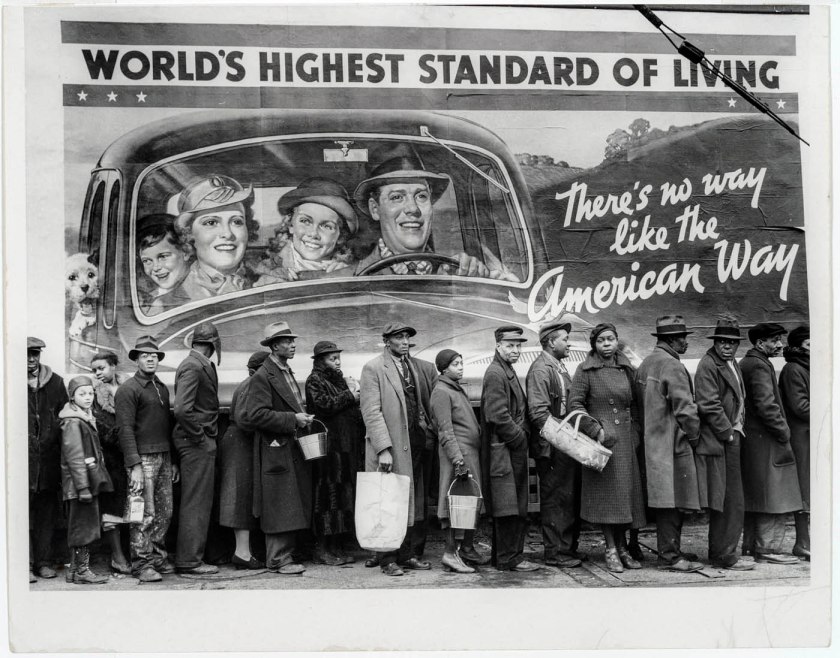
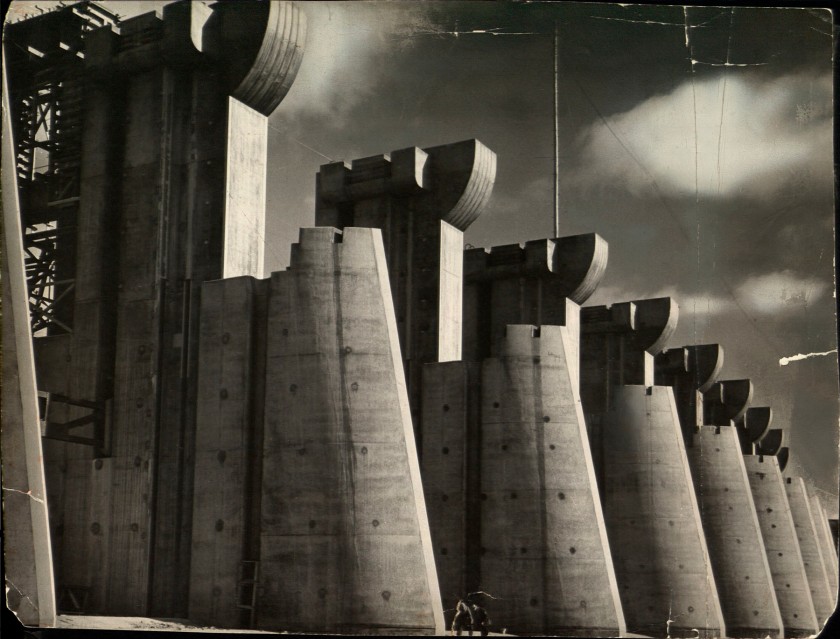

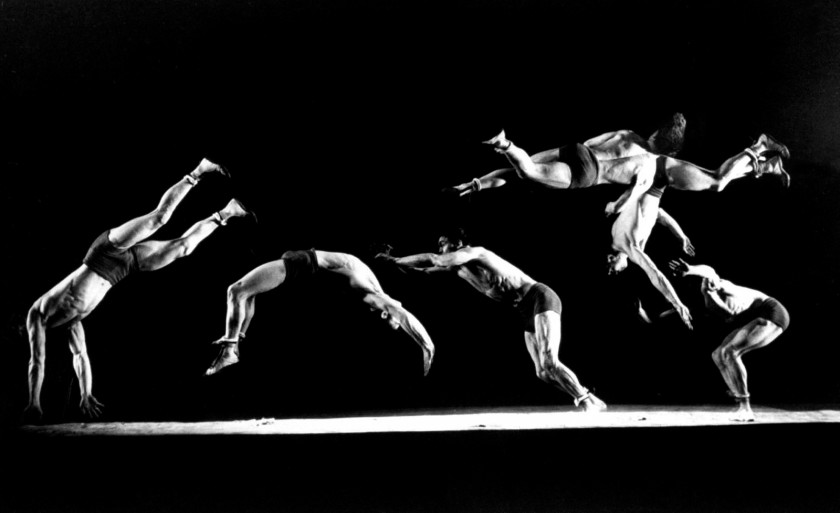








![Life Magazine (1883-1972) '[Harlem Gang Leader opening spread]' 1948 Life Magazine (1883-1972) '[Harlem Gang Leader opening spread]' 1948](https://artblart.files.wordpress.com/2022/12/15_p.-96_97-harlem-gang-leader-opening-spread.jpg?w=840)
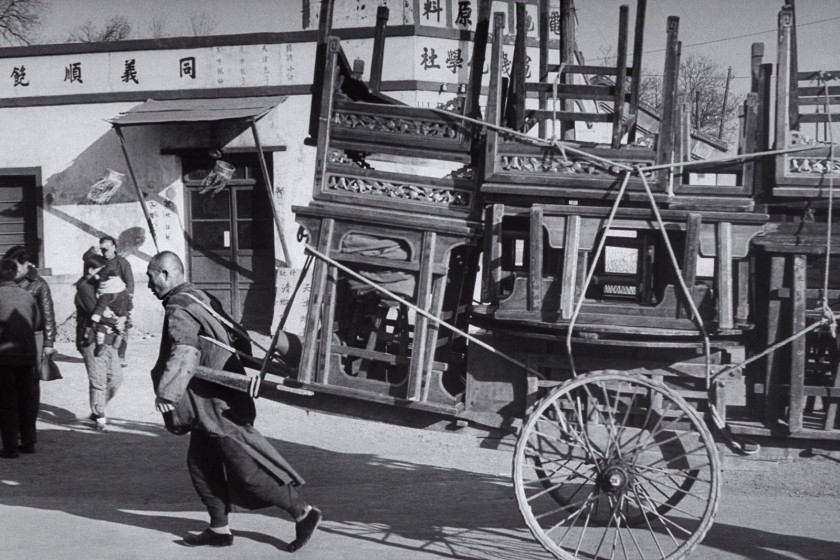


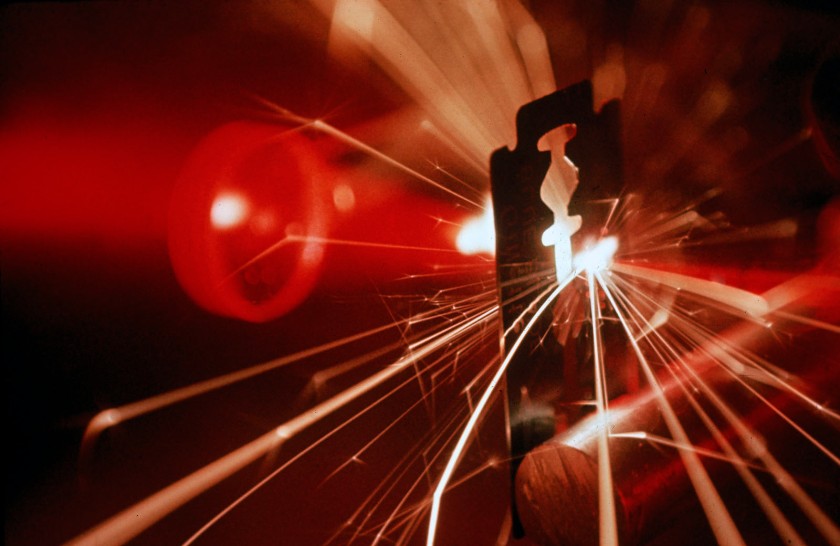

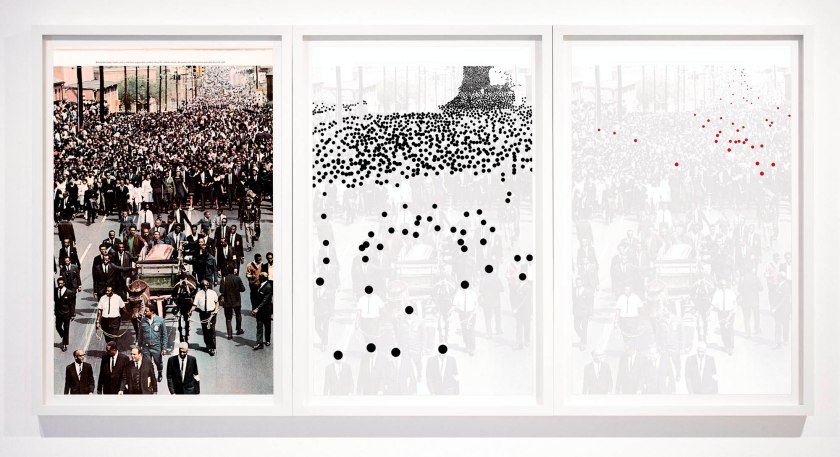
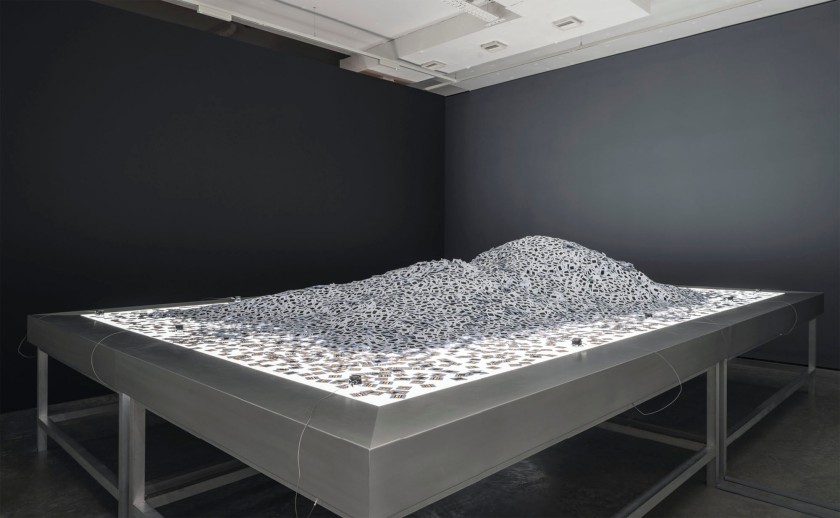


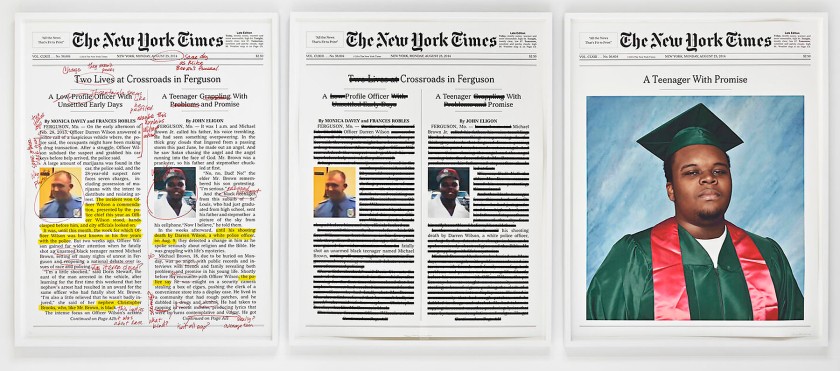



![Anonymous photographer. 'Untitled [Borough of Clunes Notice Strike ..rm Rate]' Nd Anonymous photographer. 'Untitled [Borough of Clunes Notice Strike ..rm Rate]' Nd](https://artblart.files.wordpress.com/2012/10/anon-borough-of-clunes-notice-strike-rm-rate-front-no-back3.jpg?w=655&h=441)

![National Photo Company. 'Untitled [Group of bricklayers holding their tools and a baby]' Nd National Photo Company. 'Untitled [Group of bricklayers holding their tools and a baby]' Nd](https://artblart.files.wordpress.com/2012/10/national-photo-company-nd-front1.jpg?w=655&h=421)




![E. B. Pike. 'Untitled [Older man with moustache and parted beard]' Nd E. B. Pike. 'Untitled [Older man with moustache and parted beard]' Nd](https://artblart.files.wordpress.com/2012/10/e-b-pike-back2.jpg?w=458&h=656)
![Otto von Hartitzsch. 'Untitled [Man with quaffed hair and very thin tie]' 1867-1883 Otto von Hartitzsch. 'Untitled [Man with quaffed hair and very thin tie]' 1867-1883](https://artblart.files.wordpress.com/2012/10/otto-von-hartitzsch-adelaide-1867-back2.jpg?w=463&h=662)



![Profesor Hawkins. 'Untitled [Chinese women with handkerchief]' c. 1858-1875 Profesor Hawkins. 'Untitled [Chinese women with handkerchief]' c. 1858-1875](https://artblart.files.wordpress.com/2012/10/professor-hawkins-melbourne-front3.jpg?w=444&h=589)
![J. R. Tanner. 'Untitled [Two woman wearing elaborate hats]' 1875 J. R. Tanner. 'Untitled [Two woman wearing elaborate hats]' 1875](https://artblart.files.wordpress.com/2012/10/j-r-tanner-1875-front1.jpg?w=408&h=617)


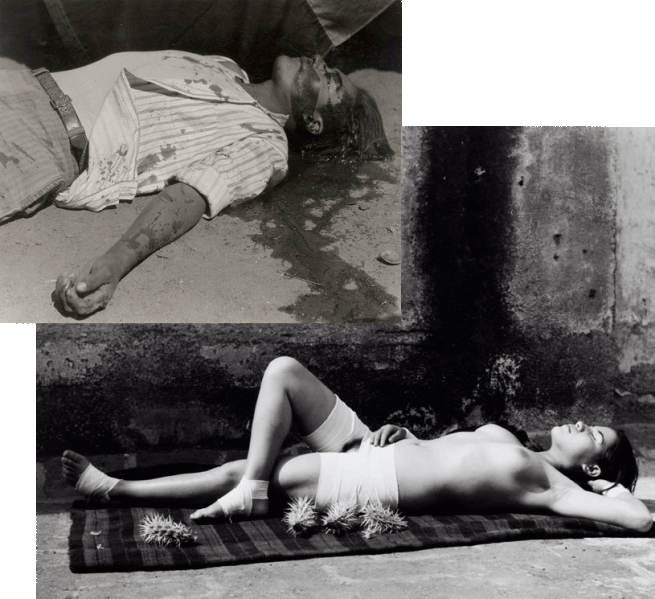






























You must be logged in to post a comment.